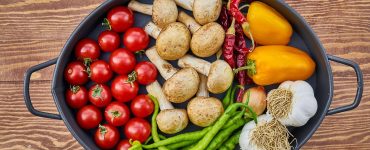Food prices are rising across the board, and it’s hitting Americans harder than in decades, according to a recent update from the U.S. Department of Agriculture. The USDA expects food prices to jump around 5.5-6.5% this year, with some key staples like beef, pork, poultry, eggs, and dairy seeing some of the biggest hikes. Even fresh produce prices are going up.
So, what can you do if you’re trying to eat healthy without breaking the bank? Here are some practical tips to help you stretch your food budget while still focusing on good nutrition:
1. Cut out processed foods and drinks
Processed foods don’t belong in your home—or your budget. Get rid of chips, cookies, crackers, and sugary drinks. These foods are full of empty calories and chemicals that don’t do your body any good. Plus, they’re a waste of money. Take chips, for example—they can cost anywhere from $2 to $5, or even more for organic versions. That’s a lot of money that could be better spent on fresh, nutrient-dense foods. Snack on fresh veggies instead and save your cash.
2. Skip the grains
Grains like bread and cereal are not essential and can be pricey, especially when it comes to gluten-free options. Bread and cereal mostly just spike your blood sugar and leave you hungry later. If you’ve ever polished off several bowls of cereal in one sitting, you know it’s not the healthiest choice. Ditch them to save money and focus on more nutritious options.
3. Avoid “Gluten-Free” products
Even if you follow a gluten-free diet, it’s better to skip most gluten-free packaged foods. They’re just as processed (if not more so) and expensive. Instead, swap those products for real, whole foods. Use lettuce as wraps, try shredded sweet potatoes with your eggs, or embrace lower-carb options to get the most out of your meals.
4. Do meal prep instead of buying pre-prepared foods
Meal prep is a great way to save both time and money. Make extra food when you’re cooking and use leftovers for future meals. A homemade, premade meal from your fridge is much healthier, more affordable, and free of all the additives and unhealthy oils found in store-bought options.
5. Frozen fruits and veggies are just as good (if not better)
Frozen veggies can be just as nutritious, if not more so, than fresh produce. They’re picked at peak ripeness and frozen right away, locking in all the nutrients. Fresh veggies often travel long distances before reaching the store, meaning they lose some of their nutritional value. Keep frozen broccoli, spinach, and kale in your freezer for quick, nutrient-packed meals. Frozen organic berries are also great for smoothies or as a topping for pancakes.
6. Make your own convenience foods
Convenience foods are usually made from just a few ingredients you probably already have in your kitchen. For example, making your own spaghetti sauce is easy and way cheaper than buying a jar. Just mix crushed tomatoes, garlic, oregano, basil, and a pinch of sugar. If you want to get fancy, brown the garlic and onion in olive oil first. Salad dressings are just as easy to make—skip the store-bought versions loaded with unhealthy oils and preservatives and make your own with olive oil, vinegar, mustard, honey, and herbs.
7. Buy cheaper cuts of meat
Instead of pricey steaks or boneless, skinless chicken breasts, buy cheaper cuts like ground beef or chicken thighs. These are just as versatile and nutritious. You can also roast a whole chicken and use leftovers in multiple meals. If you can’t afford grass-fed or organic, don’t worry—you’ll still get good quality protein from conventional meat.
8. Drink water
Cutting out sugary drinks is one of the easiest ways to save money. Even “healthier” drinks like kombucha can be expensive and packed with hidden sugars. Water is just as effective at quenching your thirst and is free!
9. Pre-packaged salad greens can be a better option
Instead of buying a bunch of different types of fresh lettuce that can go bad quickly, grab a bag of mixed greens. They’re easy to eat up before they spoil and can be more cost-effective than buying individual varieties.
10. Stick to a shopping list
The best way to avoid impulse buys is to create a thoughtful shopping list and stick to it. This will help you resist picking up junk foods that only empty your wallet and leave you with empty calories. Focus on nutrient-dense foods like fresh fruits, veggies, meat, and eggs.
By making a few changes to how you shop and eat, you can stay on track with a healthy diet without blowing your budget. Cutting out processed foods and empty carbs will help you curb cravings, avoid mindless eating, and stick to your health and weight loss goals. Happy shopping!











